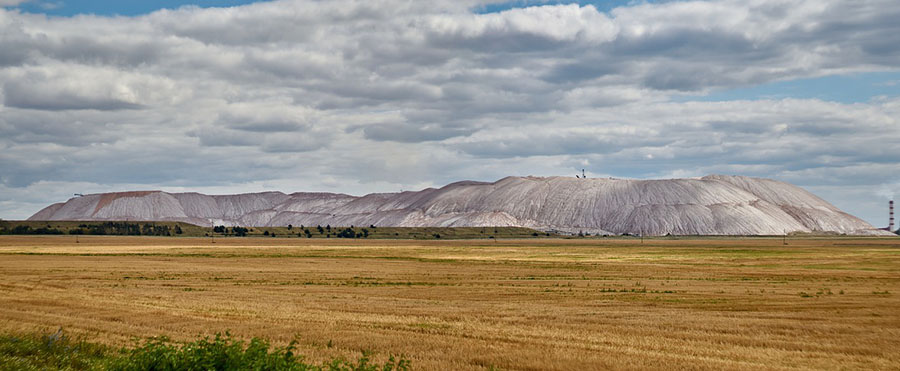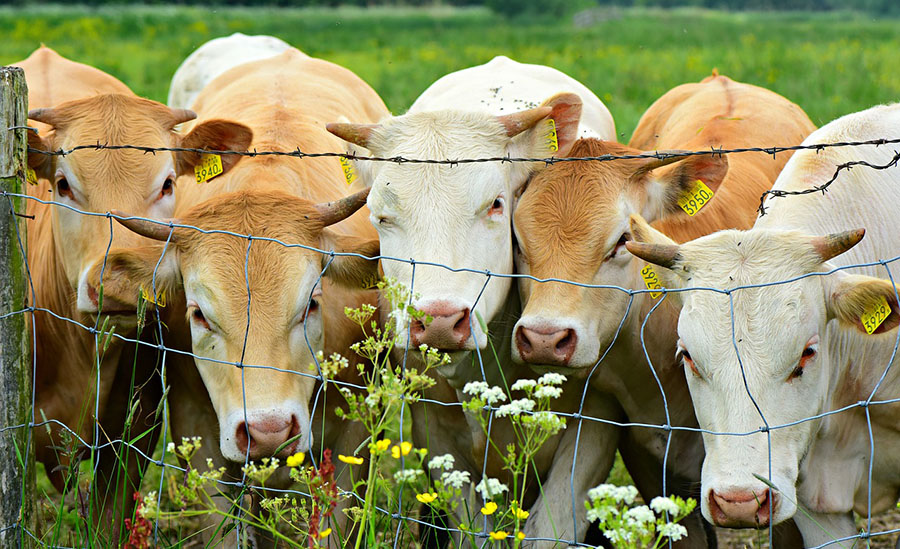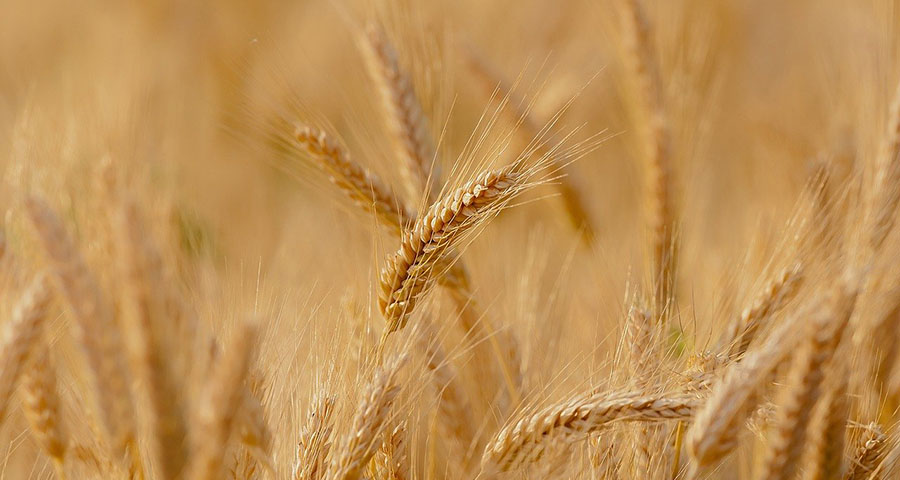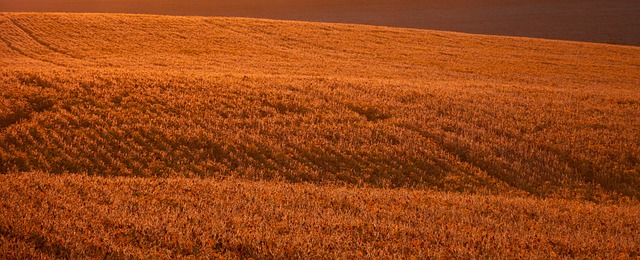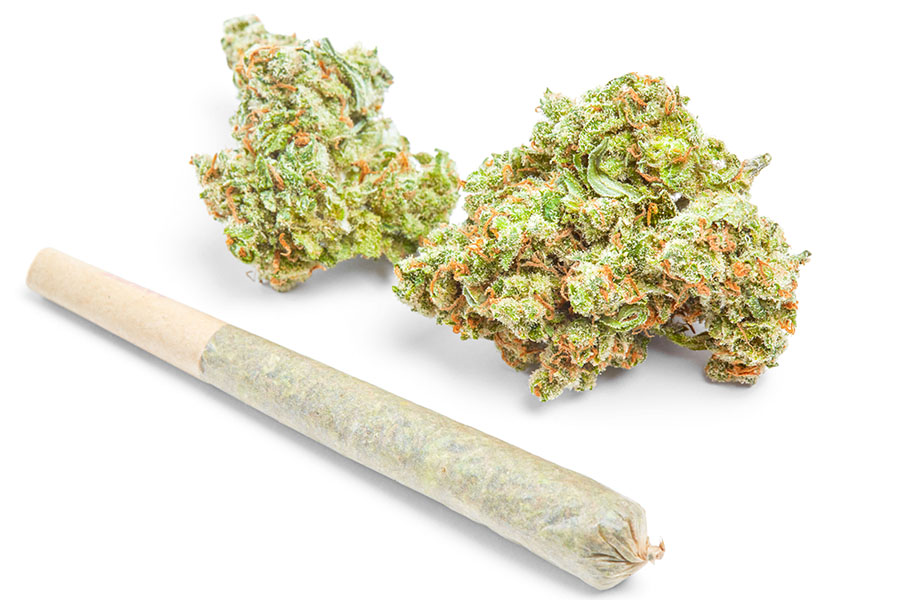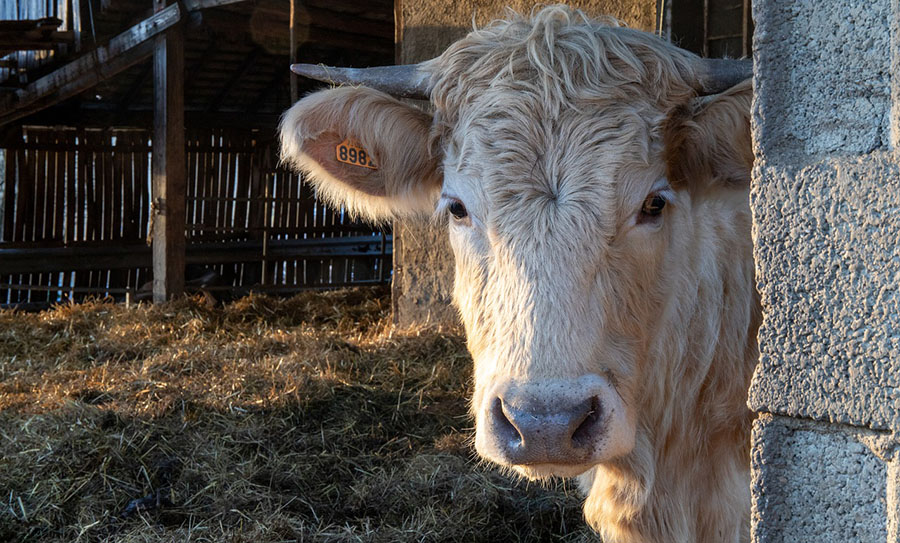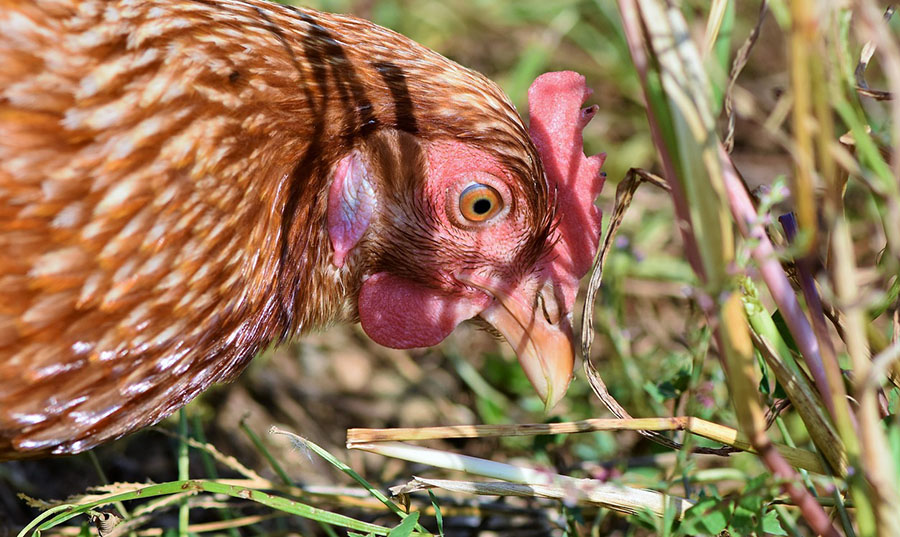TICKERS: DAN; DRRSF; JE9N, GER, MOS
Brian Ostroff: Conflict Exposes Need for Phosphate Independence
Interview
Source: George Mack of The Energy Report (4/14/11)
 There's more to fertilizer than potash, according to Windermere Capital Managing Director Brian Ostroff. He touts the value to be found in phosphate and offers his take on how the unrest in Africa, environmental concerns, global food prices and basic geology drive the phosphate market in this exclusive interview with The Energy Report.
There's more to fertilizer than potash, according to Windermere Capital Managing Director Brian Ostroff. He touts the value to be found in phosphate and offers his take on how the unrest in Africa, environmental concerns, global food prices and basic geology drive the phosphate market in this exclusive interview with The Energy Report.
The Energy Report: Brian, please start by sharing Windermere Capital's investment philosophy.
Brian Ostroff: Windermere is an investment manager. We currently oversee two hedge funds with a natural resource focus. The Breakaway Strategic Resource Fund and the Navigator Fund are both offshore hedge funds based in the Cayman Islands. They are open-ended funds designed for high net-worth individuals and institutional investors. They are quoted on the Irish Stock Exchange, but subscriptions are done directly with the fund. Most of the people here have technical backgrounds as opposed to a financial or capital markets background. We have two partners in our fund—Ocean Partners, which is made up of the former ores and concentrate trading team at Pechiney and Peter Hawley and his group. These guys have all been in the business for +30 years, building and operating mines.
The other area where we think differently from other funds is that we are active investors. We tend to take fair-sized stakes in the companies in which we get involved. Then, we try to help the company going forward by making additions on its board, perhaps helping it operationally, assessing its assets and either helping the company divest or find other assets.
Finally, we are extremely value oriented. We tend to look at a company and assemble a peer group. We try to understand why a given company is trading considerably cheaper than similar operations, and then we identify the issues and how we could close the gap. After that, we have a discussion with management to see that we're all on the same page. Once again, we are active—not activist. We have a meeting of the minds and when everyone is comfortable with the business plan, we tend to make our investment.
TER: Would you tell us about the differences in your two funds?
BO: The Breakaway Strategic Resource is mining only. Due to the technical expertise to which I alluded, the fund can make investments anywhere along the spectrum. Originally, we looked to buy distressed assets, even outright buying the properties or the mines. We do structured debt through our partners and offtake deals all the way through outright investment in the company's equity. I like to describe Breakaway as a complete "rocks to stocks" investor.
TER: And what about Navigator?
BO: Navigator is all natural resources. Aside from mining, it also does energy and agriculture, paper and forest, etc. Its investments are primarily in publicly traded equities; however, we do have some room for near-public investments (i.e., those that we think can go public within about six months).
TER: Aside from precious metals, does the Breakaway Fund invest in other mining operations?
BO: We tend to have a place in our portfolios for niche commodities, or what I call the funky metals. That would be strategic metals, not necessarily rare earth elements (REEs) but things like graphite or vanadium.
We've become fairly involved in phosphate, which is a necessary component of fertilizer. Currently, potash is on the minds of most agricultural investors as the area has done very well. I think we may be going into a time when people will start to look at phosphate. There are a couple of important things to understand in the world of phosphate. First, there are two types of phosphate deposits. Most—probably 90%—are sedimentary; the rest are igneous.
Most of the world's production comes from the sedimentary deposits. But they tend to have a lot of nasty contaminants in them. And due to the mineralogy of the sedimentary deposits, the concentrate that comes out is not as high as the concentrate that you can get out of igneous deposits. That can be a confusing factor for people who are not that familiar with the industry and the types of deposits. People will look at a 25% sedimentary phosphate deposit, and then look at an 8% igneous phosphate deposit and come to the erroneous conclusion that the 25% deposit is better than the 8%.
TER: But you would make a better margin on the igneous because you don't have to purify out all the cadmium and uranium and such, right?
BO: Right. A sedimentary deposit might start at a 25% grade, but when you beneficiate it, you're not going to get much higher than the low- to mid-30% range. Whereas, because of the mineralogy, you can beneficiate an 8% igneous deposit as high as 40% grade. What you really have to look at isn't your starting grade, but rather what the concentrate will be and, ultimately, the price you will be able to get for the product.
The other interesting thing about the world of phosphate is that, right now, China is the largest producer, but it doesn't export. The biggest player in the world of phosphate export is Morocco. Morocco comprises roughly 35% of the entire phosphate export market, which really makes the country the swing factor. Other players in the space include Jordan, Tunisia and Egypt. Given the turmoil in North Africa, that could present a big problem to the world.
Right now, North America runs a deficit in phosphate. We have to import it now and will continue doing so for the foreseeable future. Canada, while rich in potash, only has one operating phosphate mine—and that mine will probably deplete within the next two to three years. The other big phosphate areas in North America are Idaho and Florida. Both of these are sedimentary-type deposits, which brings environmental issues into play. In Florida, environmental problems have brought shutdown threats. One Florida mine operated by The Mosaic Company (NYSE:MOS) was shut down. It currently has a stay of execution, pending appeal. But, if that were to close, it would only exacerbate the deficit that North America runs.
In terms of pricing, phosphate is very different from things like gold and copper, which have a global price. Gold is gold and it's at or above US$1,450/oz. everywhere in the world.
TER: You can't arbitrage gold.
BO: Correct. Gold coming out of Chile, Australia, South America or Canada will get the same price in the open market; whereas, phosphate is a negotiated market. Contracts and things like location, transportation and quality of the concentrate are going to be the driving forces. That means pricing on all phosphate is not the same. The closest thing that we have to a benchmark is Moroccan FOB (freight on board), and that's roughly US$150–$160 per ton.
At the end of the day, it all comes down to what's the investment opportunity in phosphate? Our current view is that the world is quite aware of potash; potash stories have done extremely well and are actually quite numerous. Now, people are waking up to phosphate—and there are nowhere near as many opportunities in phosphate as there are in potash.
As investors start to understand the importance and the dynamics of phosphate, there will be increased investor demand. With considerably fewer situations to look at relative to potash, even a small shift out of potash into phosphate will have a pretty significant effect. I anticipate the sector, as a whole, will perform quite well.
TER: It also serves as a nifty hedge against falling dominos in North Africa.
BO: Absolutely. Supply security has become an increasingly important investment theme. Certainly, in the case of phosphate, it would be very important.
TER: Where does an investor take advantage of this opportunity?
BO: There are several names in the phosphate sector. Our fund is a large investor in a company called Ressources d'Arianne (TSX.V:DAN; OTCBB:DRRSF; Fkft:JE9N), more commonly referred to as Arianne Resources Inc. The company is based in Québec, so that addresses the security of supply. And it has easy access to the deprived North American markets.
As North American phosphoric acid producers for fertilizer start to look for more phosphate deposits in North America, Arianne will be very well situated. It's close to infrastructure; an overload road that currently carries timber runs right through its property. It is within easy trucking distance of both a deep-sea port and the railway.
Arianne has an igneous deposit that yields a very pure concentrate, near 40% grade. The company already has a scoping study and it's drilling to expand that resource. Arianne should have its prefeasibility report out sometime this summer and the original scoping study shows very healthy economics on this project. Actually, we find it is more advanced than most of the phosphate stories out there. It currently trades with just a US$60M market cap. This goes back to the question of where Windermere finds value. Relative to its peer group, Arianne is definitely at the bottom end with what we consider a superior asset.
TER: How long have you owned it?
BO: We've owned it for a little less than four months.
TER: Arianne's stock is up almost five times over the past six months. Any stock would be due for a pullback after that. Yet, you still see this as a value play?
BO: Absolutely. For us, value is a relative matter. So, although the stock has performed very well and is up about fivefold over the last few months, it also has pulled back about 40% from its highs. Arianne has a US$60M market cap. The closest peer would be somewhere around a US$130M market cap, ranging all the way up to about a US$300M market cap.
TER: Arianne Resources produces many different metals in addition to its phosphate division, but you're saying that phosphate is the mover, the catalyst for this company.
BO: Yes, Arianne owns exploration assets in other commodities but its main focus is the phosphate deposit. That is where the company is focusing 100% of its energy.
TER: In the first half of February, we saw some really unusual activity in Arianne's shares; in fact, it was so pronounced that the company put out a press release saying it had no knowledge of any material change. Was this a manifestation of home gamers, day traders, do you think?
BO: No, I think what happened was that, when the agricultural cycle started to heat up again as a whole, people started to take a look at Arianne in light of our investment. They came to the same determination that we had, which was, relatively speaking, this company looks really, really cheap. As the stock started to appreciate, it gained momentum. More people saw the name and took the time to understand the situation. That continued to drive it.
TER: There was a lot of press at the end of 2010 and continuing into 2011 about the rising cost of food all over the world. I know that had an effect on fertilizer stocks—both phosphate and potash—but there was also anticipation of Lac à Paul deposit results. Do you think that could have been part of it, as well?
BO: Certainly, Arianne put out some results. Those numbers will be reincorporated into its resources numbers associated with the prefeasibility study. Previous drilling in that zone had been done only to 200 meters. The drilling that came out in February was down to the 400-meter level and showed the continuity of the deposit.
TER: Does Arianne own any of its own supply or processing chain?
BO: No, the company is in exploration mode. I think the prefeasibility study will start to determine what needs to be done to put this thing into production.
TER: And therein lies the value.
BO: Yes.
TER: Do you have another name for us in the phosphate sector?
BO: Yes. Going a little further down the chain, we are currently in the process of making an investment in a company called Glen Eagle Resources Inc. (TSX.V:GER), which is very, very early stage. Drilling on its property isn't set to commence until sometime this summer. The company picked up a property, Lac Lisette, which is 40 kilometers away from Arianne's property, attached by the same main road. Preliminary results from some grab samples seem to indicate a similar type of deposit; but, of course, until the drilling is done, it is a bit of a question mark.
TER: Obviously, you saw something in it that you liked. In fact, your investment philosophy is to be early.
BO: Glen Eagle's proximity to Arianne, the fact that it is an igneous deposit in the same general macro-phosphate and proximity to infrastructure are advantages. And given the North American deficit in phosphate, we think there would be room for a couple of quality assets in that area.
TER: Those are a couple of good phosphate stories, Brian. Thanks for your time.
Brian Ostroff joined Windermere Capital, Inc. in 2009 and is a managing director. His area of focus is the junior and mid-tier mining sector. His previous experience includes a stint as a proprietary trader at a major Canadian bank and four years trading on his own. He also worked at the M&A advisory firm Goodrich Capital, where he was the Canadian managing partner overseeing mandates across a spectrum of industries with a focus on display technologies and mining. He worked at RBC Dominion Securities, where his focus was on smaller-cap special situations and alternative investments. Brian is a graduate of the University of Toronto. He can be reached at bostroff@windermerecapital.com, 514-908-4202.
Want to read more exclusive Energy Report interviews like this? Sign up for our free e-newsletter, and you'll learn when new articles have been published. To see a list of recent interviews with industry analysts and commentators, visit our Expert Insights page.
DISCLOSURE:
1) George Mack of The Energy Report conducted this interview. He personally and/or his family own shares of the following companies mentioned in this interview: None.
2) The following companies mentioned in the interview are sponsors of The Energy Report: None.
3) Brian Ostroff: I personally and/or my family own shares of the following companies mentioned in this interview: Arianne Resources. I personally and/or my family am paid by the following companies mentioned in this interview: None.
4) Windermere Capital (through its various entities) owns shares in Arianne Resources and Glen Eagle Resources.
Brian Ostroff: Windermere is an investment manager. We currently oversee two hedge funds with a natural resource focus. The Breakaway Strategic Resource Fund and the Navigator Fund are both offshore hedge funds based in the Cayman Islands. They are open-ended funds designed for high net-worth individuals and institutional investors. They are quoted on the Irish Stock Exchange, but subscriptions are done directly with the fund. Most of the people here have technical backgrounds as opposed to a financial or capital markets background. We have two partners in our fund—Ocean Partners, which is made up of the former ores and concentrate trading team at Pechiney and Peter Hawley and his group. These guys have all been in the business for +30 years, building and operating mines.
The other area where we think differently from other funds is that we are active investors. We tend to take fair-sized stakes in the companies in which we get involved. Then, we try to help the company going forward by making additions on its board, perhaps helping it operationally, assessing its assets and either helping the company divest or find other assets.
Finally, we are extremely value oriented. We tend to look at a company and assemble a peer group. We try to understand why a given company is trading considerably cheaper than similar operations, and then we identify the issues and how we could close the gap. After that, we have a discussion with management to see that we're all on the same page. Once again, we are active—not activist. We have a meeting of the minds and when everyone is comfortable with the business plan, we tend to make our investment.
TER: Would you tell us about the differences in your two funds?
BO: The Breakaway Strategic Resource is mining only. Due to the technical expertise to which I alluded, the fund can make investments anywhere along the spectrum. Originally, we looked to buy distressed assets, even outright buying the properties or the mines. We do structured debt through our partners and offtake deals all the way through outright investment in the company's equity. I like to describe Breakaway as a complete "rocks to stocks" investor.
TER: And what about Navigator?
BO: Navigator is all natural resources. Aside from mining, it also does energy and agriculture, paper and forest, etc. Its investments are primarily in publicly traded equities; however, we do have some room for near-public investments (i.e., those that we think can go public within about six months).
TER: Aside from precious metals, does the Breakaway Fund invest in other mining operations?
BO: We tend to have a place in our portfolios for niche commodities, or what I call the funky metals. That would be strategic metals, not necessarily rare earth elements (REEs) but things like graphite or vanadium.
We've become fairly involved in phosphate, which is a necessary component of fertilizer. Currently, potash is on the minds of most agricultural investors as the area has done very well. I think we may be going into a time when people will start to look at phosphate. There are a couple of important things to understand in the world of phosphate. First, there are two types of phosphate deposits. Most—probably 90%—are sedimentary; the rest are igneous.
Most of the world's production comes from the sedimentary deposits. But they tend to have a lot of nasty contaminants in them. And due to the mineralogy of the sedimentary deposits, the concentrate that comes out is not as high as the concentrate that you can get out of igneous deposits. That can be a confusing factor for people who are not that familiar with the industry and the types of deposits. People will look at a 25% sedimentary phosphate deposit, and then look at an 8% igneous phosphate deposit and come to the erroneous conclusion that the 25% deposit is better than the 8%.
TER: But you would make a better margin on the igneous because you don't have to purify out all the cadmium and uranium and such, right?
BO: Right. A sedimentary deposit might start at a 25% grade, but when you beneficiate it, you're not going to get much higher than the low- to mid-30% range. Whereas, because of the mineralogy, you can beneficiate an 8% igneous deposit as high as 40% grade. What you really have to look at isn't your starting grade, but rather what the concentrate will be and, ultimately, the price you will be able to get for the product.
The other interesting thing about the world of phosphate is that, right now, China is the largest producer, but it doesn't export. The biggest player in the world of phosphate export is Morocco. Morocco comprises roughly 35% of the entire phosphate export market, which really makes the country the swing factor. Other players in the space include Jordan, Tunisia and Egypt. Given the turmoil in North Africa, that could present a big problem to the world.
Right now, North America runs a deficit in phosphate. We have to import it now and will continue doing so for the foreseeable future. Canada, while rich in potash, only has one operating phosphate mine—and that mine will probably deplete within the next two to three years. The other big phosphate areas in North America are Idaho and Florida. Both of these are sedimentary-type deposits, which brings environmental issues into play. In Florida, environmental problems have brought shutdown threats. One Florida mine operated by The Mosaic Company (NYSE:MOS) was shut down. It currently has a stay of execution, pending appeal. But, if that were to close, it would only exacerbate the deficit that North America runs.
In terms of pricing, phosphate is very different from things like gold and copper, which have a global price. Gold is gold and it's at or above US$1,450/oz. everywhere in the world.
TER: You can't arbitrage gold.
BO: Correct. Gold coming out of Chile, Australia, South America or Canada will get the same price in the open market; whereas, phosphate is a negotiated market. Contracts and things like location, transportation and quality of the concentrate are going to be the driving forces. That means pricing on all phosphate is not the same. The closest thing that we have to a benchmark is Moroccan FOB (freight on board), and that's roughly US$150–$160 per ton.
At the end of the day, it all comes down to what's the investment opportunity in phosphate? Our current view is that the world is quite aware of potash; potash stories have done extremely well and are actually quite numerous. Now, people are waking up to phosphate—and there are nowhere near as many opportunities in phosphate as there are in potash.
As investors start to understand the importance and the dynamics of phosphate, there will be increased investor demand. With considerably fewer situations to look at relative to potash, even a small shift out of potash into phosphate will have a pretty significant effect. I anticipate the sector, as a whole, will perform quite well.
TER: It also serves as a nifty hedge against falling dominos in North Africa.
BO: Absolutely. Supply security has become an increasingly important investment theme. Certainly, in the case of phosphate, it would be very important.
TER: Where does an investor take advantage of this opportunity?
BO: There are several names in the phosphate sector. Our fund is a large investor in a company called Ressources d'Arianne (TSX.V:DAN; OTCBB:DRRSF; Fkft:JE9N), more commonly referred to as Arianne Resources Inc. The company is based in Québec, so that addresses the security of supply. And it has easy access to the deprived North American markets.
As North American phosphoric acid producers for fertilizer start to look for more phosphate deposits in North America, Arianne will be very well situated. It's close to infrastructure; an overload road that currently carries timber runs right through its property. It is within easy trucking distance of both a deep-sea port and the railway.
Arianne has an igneous deposit that yields a very pure concentrate, near 40% grade. The company already has a scoping study and it's drilling to expand that resource. Arianne should have its prefeasibility report out sometime this summer and the original scoping study shows very healthy economics on this project. Actually, we find it is more advanced than most of the phosphate stories out there. It currently trades with just a US$60M market cap. This goes back to the question of where Windermere finds value. Relative to its peer group, Arianne is definitely at the bottom end with what we consider a superior asset.
TER: How long have you owned it?
BO: We've owned it for a little less than four months.
TER: Arianne's stock is up almost five times over the past six months. Any stock would be due for a pullback after that. Yet, you still see this as a value play?
BO: Absolutely. For us, value is a relative matter. So, although the stock has performed very well and is up about fivefold over the last few months, it also has pulled back about 40% from its highs. Arianne has a US$60M market cap. The closest peer would be somewhere around a US$130M market cap, ranging all the way up to about a US$300M market cap.
TER: Arianne Resources produces many different metals in addition to its phosphate division, but you're saying that phosphate is the mover, the catalyst for this company.
BO: Yes, Arianne owns exploration assets in other commodities but its main focus is the phosphate deposit. That is where the company is focusing 100% of its energy.
TER: In the first half of February, we saw some really unusual activity in Arianne's shares; in fact, it was so pronounced that the company put out a press release saying it had no knowledge of any material change. Was this a manifestation of home gamers, day traders, do you think?
BO: No, I think what happened was that, when the agricultural cycle started to heat up again as a whole, people started to take a look at Arianne in light of our investment. They came to the same determination that we had, which was, relatively speaking, this company looks really, really cheap. As the stock started to appreciate, it gained momentum. More people saw the name and took the time to understand the situation. That continued to drive it.
TER: There was a lot of press at the end of 2010 and continuing into 2011 about the rising cost of food all over the world. I know that had an effect on fertilizer stocks—both phosphate and potash—but there was also anticipation of Lac à Paul deposit results. Do you think that could have been part of it, as well?
BO: Certainly, Arianne put out some results. Those numbers will be reincorporated into its resources numbers associated with the prefeasibility study. Previous drilling in that zone had been done only to 200 meters. The drilling that came out in February was down to the 400-meter level and showed the continuity of the deposit.
TER: Does Arianne own any of its own supply or processing chain?
BO: No, the company is in exploration mode. I think the prefeasibility study will start to determine what needs to be done to put this thing into production.
TER: And therein lies the value.
BO: Yes.
TER: Do you have another name for us in the phosphate sector?
BO: Yes. Going a little further down the chain, we are currently in the process of making an investment in a company called Glen Eagle Resources Inc. (TSX.V:GER), which is very, very early stage. Drilling on its property isn't set to commence until sometime this summer. The company picked up a property, Lac Lisette, which is 40 kilometers away from Arianne's property, attached by the same main road. Preliminary results from some grab samples seem to indicate a similar type of deposit; but, of course, until the drilling is done, it is a bit of a question mark.
TER: Obviously, you saw something in it that you liked. In fact, your investment philosophy is to be early.
BO: Glen Eagle's proximity to Arianne, the fact that it is an igneous deposit in the same general macro-phosphate and proximity to infrastructure are advantages. And given the North American deficit in phosphate, we think there would be room for a couple of quality assets in that area.
TER: Those are a couple of good phosphate stories, Brian. Thanks for your time.
Brian Ostroff joined Windermere Capital, Inc. in 2009 and is a managing director. His area of focus is the junior and mid-tier mining sector. His previous experience includes a stint as a proprietary trader at a major Canadian bank and four years trading on his own. He also worked at the M&A advisory firm Goodrich Capital, where he was the Canadian managing partner overseeing mandates across a spectrum of industries with a focus on display technologies and mining. He worked at RBC Dominion Securities, where his focus was on smaller-cap special situations and alternative investments. Brian is a graduate of the University of Toronto. He can be reached at bostroff@windermerecapital.com, 514-908-4202.
Want to read more exclusive Energy Report interviews like this? Sign up for our free e-newsletter, and you'll learn when new articles have been published. To see a list of recent interviews with industry analysts and commentators, visit our Expert Insights page.
DISCLOSURE:
1) George Mack of The Energy Report conducted this interview. He personally and/or his family own shares of the following companies mentioned in this interview: None.
2) The following companies mentioned in the interview are sponsors of The Energy Report: None.
3) Brian Ostroff: I personally and/or my family own shares of the following companies mentioned in this interview: Arianne Resources. I personally and/or my family am paid by the following companies mentioned in this interview: None.
4) Windermere Capital (through its various entities) owns shares in Arianne Resources and Glen Eagle Resources.



